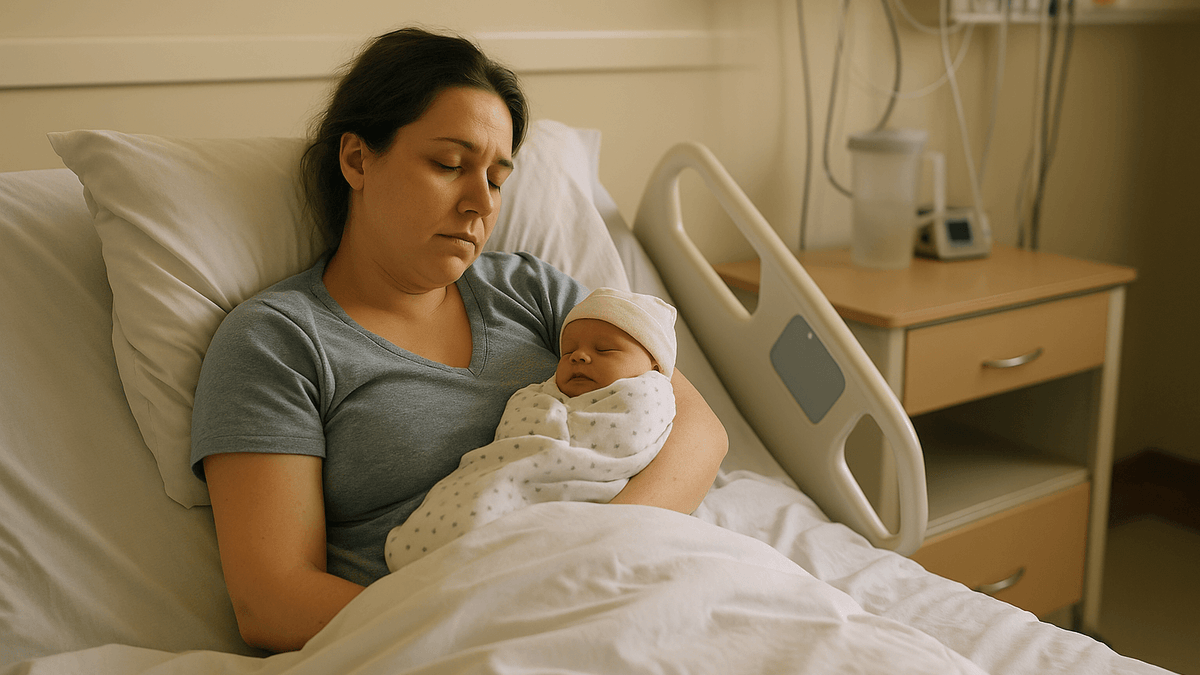
C-Section Recovery: Tips to Rest Well and Sleep Better
|
|
Tempo di lettura 5 min

Sleep is essential for our well-being, and we understand that a good...
|
|
Tempo di lettura 5 min
Preparing for a caesarean—or supporting someone who is—means juggling healing, feeding, and patchy energy. This guide gives you the big picture: what the operation means for day-to-day life, a realistic week-by-week outlook, and small habits that make recovery smoother. If you specifically want night-time positioning and set-up, jump to our dedicated guide: How to Sleep After a C-Section.
A caesarean isn’t a minor procedure. To reach the baby, clinicians go through skin, fat and connective tissue, and separate abdominal muscles before opening the uterus. Everything is then closed in layers. Understanding that helps you give your body permission to go slowly. Recovery is not a race; it’s tissue healing plus the emotional work of becoming a parent.
For a clear overview of how the procedure works, see the NHS guide to caesarean sections.
You’re not behind. You’re healing. You’re learning. You’re doing something remarkable — and you’re not alone.
In hospital and the first days at home, these sensations are common — they don’t mean something is wrong, but they do deserve gentle care:
There’s no one right way to feel. Some people are elated, some feel flat, and many feel a wave of emotion they didn’t expect. It’s also common to miss the “instant bonding” moment if you were groggy or overwhelmed. That doesn’t mean bonding won’t happen; it often builds quietly over days and weeks.
“I couldn’t enjoy holding my baby at birth. I was too drugged from the anaesthetics. I just went back to sleep — and I wish I could have been more present.”
Reduce night-time tugging and keep feeds supported.
Shop Sanggol® Full-Body PillowHealing isn’t linear, but these checkpoints can help you and your supporters set realistic expectations.
Support is essential, not optional.
Pressure to be “back to normal” often shows up here — go gently; internal healing continues.
Think circulation, not milestones. Short, frequent walks around your home are more helpful than one big push that spikes pain. Use routines—morning window-open, midday stretch, evening reset—to avoid long periods in one posture. If new or asymmetric pain appears, scale back and check in with your midwife or GP.
Recovery isn’t just physical. You might compare yourself with friends who had vaginal births, grieve a birth plan that changed, or feel guilty for needing rest. All normal. Your job is to heal, feed your baby, and ask for help without apology. If anxiety, intrusive thoughts, or low mood persist beyond two weeks, speak to your GP or midwife — support is part of recovery.
For specialist support, the PANDAS Foundation offers resources for perinatal mental health and postnatal depression.
Keep movements small at night and let pillows do the holding. Before lights out, build a semi-reclined backrest, lay out water and prescribed pain relief, and decide which side you’ll roll toward so every exit is the same. For a full walk-through of positions, safer turns (log-roll), and night-feeding ergonomics, see How to Sleep After a C-Section (our dedicated sleep-after-caesarean guide).
Support doesn’t erase pain, but it changes how your body shares the load. In recovery, the goal is stability and easy exits—not fancy positions. Here’s what many people notice:
If leaks or spills worry you, protect the pillow with a washable cover and keep a spare ready. When you’re ready, here’s how to wash and care for body pillows between deeper cleans.
Choose supportive positioning while you heal after caesarean.
Get Your Full-Body PillowKeep water, a snack, and lip balm at the bedside; feeding can make you parched and drowsy. Try side-lying or semi-reclined positions so the abdominal wall stays relaxed. Short, slow walks around the house are enough early on — think circulation, not cardio. Gentle breath-led pelvic-floor squeezes (inhale to relax, exhale to lift) can be sprinkled through your day once your clinician gives the nod.
Partners, friends, and family often want to help but aren’t sure how. These basics make a real difference day to day:
For clinical guidance on recovery timelines and red-flag symptoms, the NHS overview is clear and practical:
The following symptoms deserve prompt medical advice. Getting checked is part of good recovery:
How long does recovery take? Many people feel more comfortable by 6–8 weeks, but internal healing continues beyond that. Pace yourself and follow your clinician’s advice.
What sleep position is most comfortable? Side-lying with a full-length pillow between the knees usually reduces pulling. For step-by-step positioning and set-up, see our dedicated sleep-after-caesarean guide.
When should I call a doctor? Seek advice for heavy bleeding, fever, foul-smelling discharge, severe or worsening pain, chest pain, leg swelling, or ongoing low mood or intrusive thoughts.